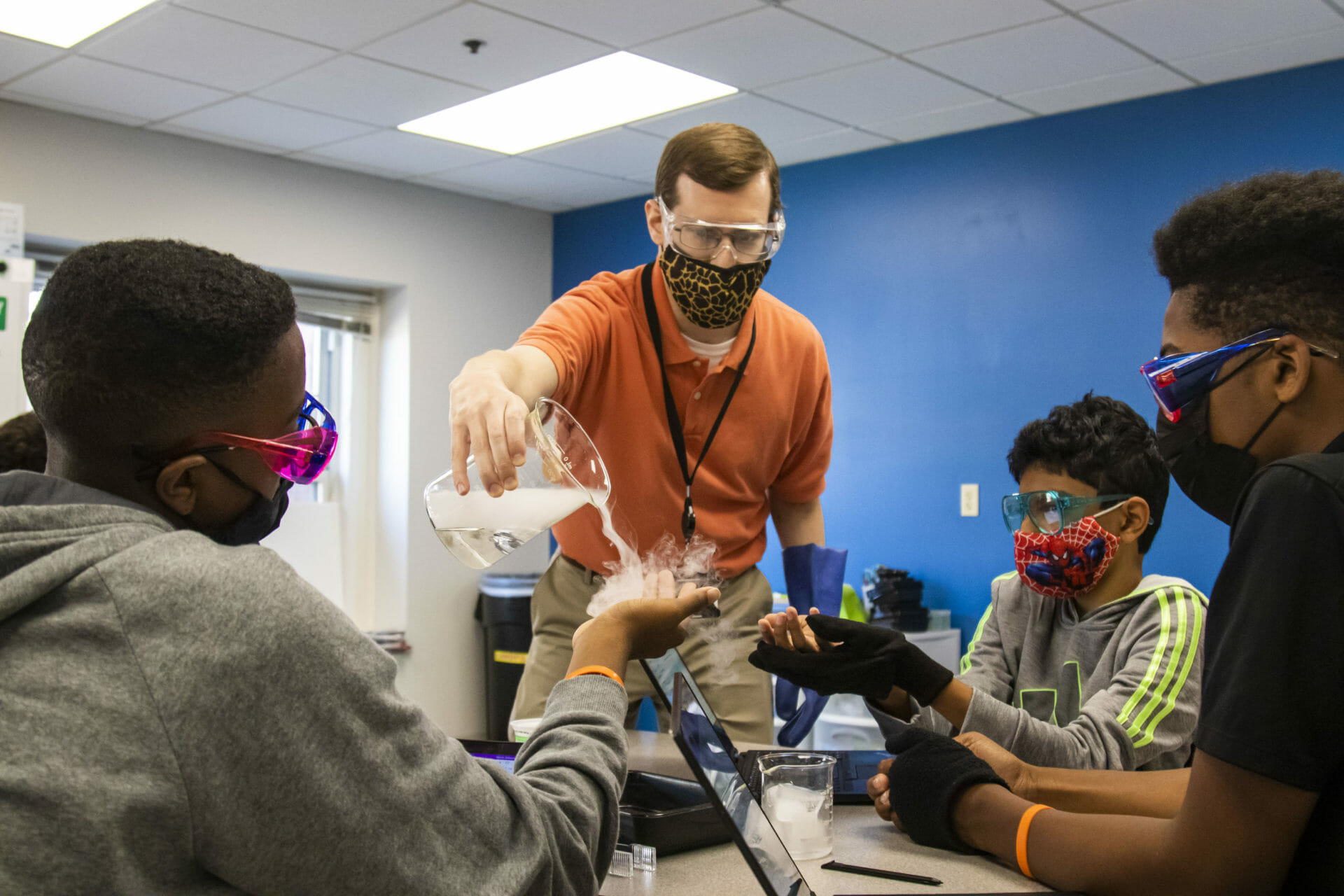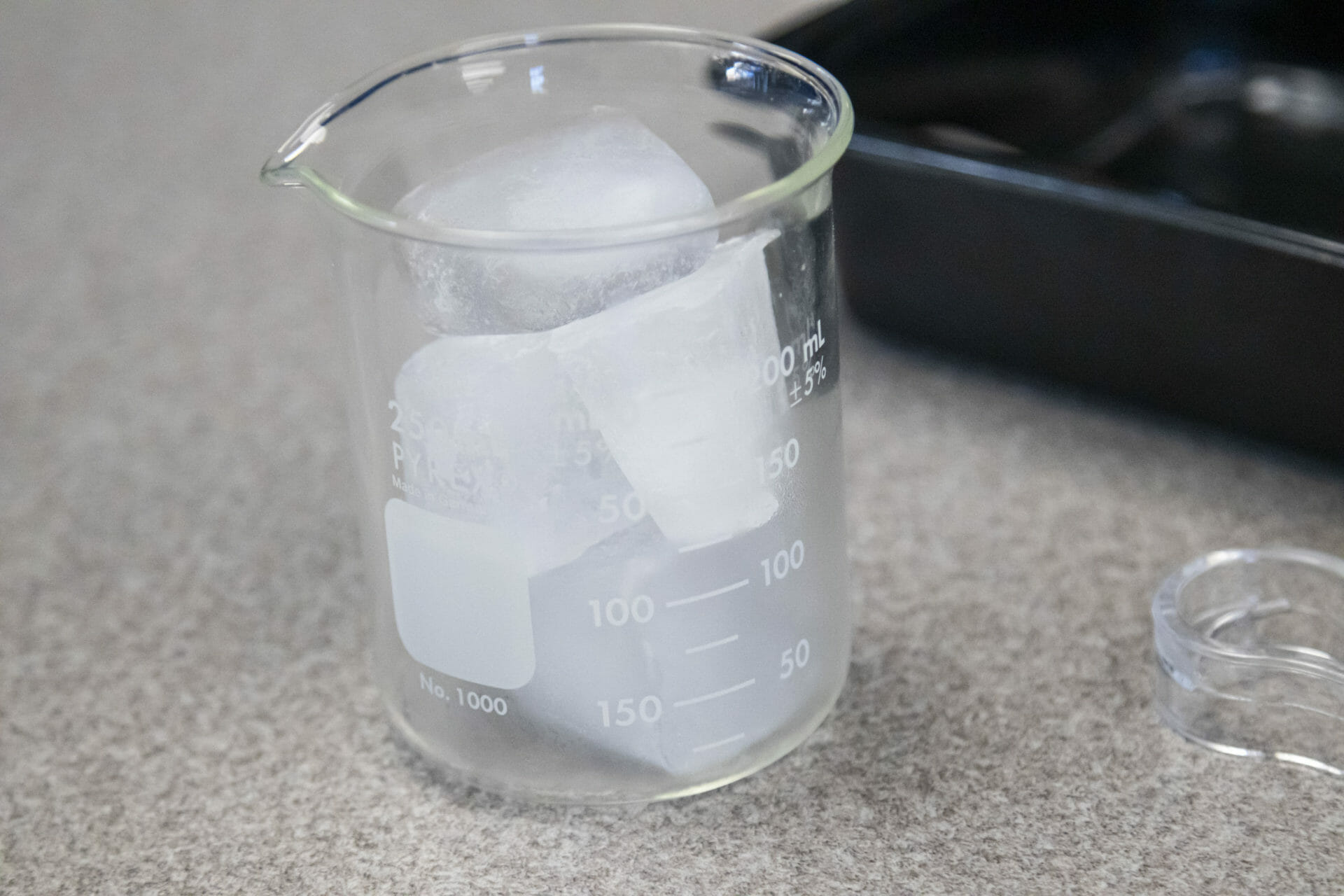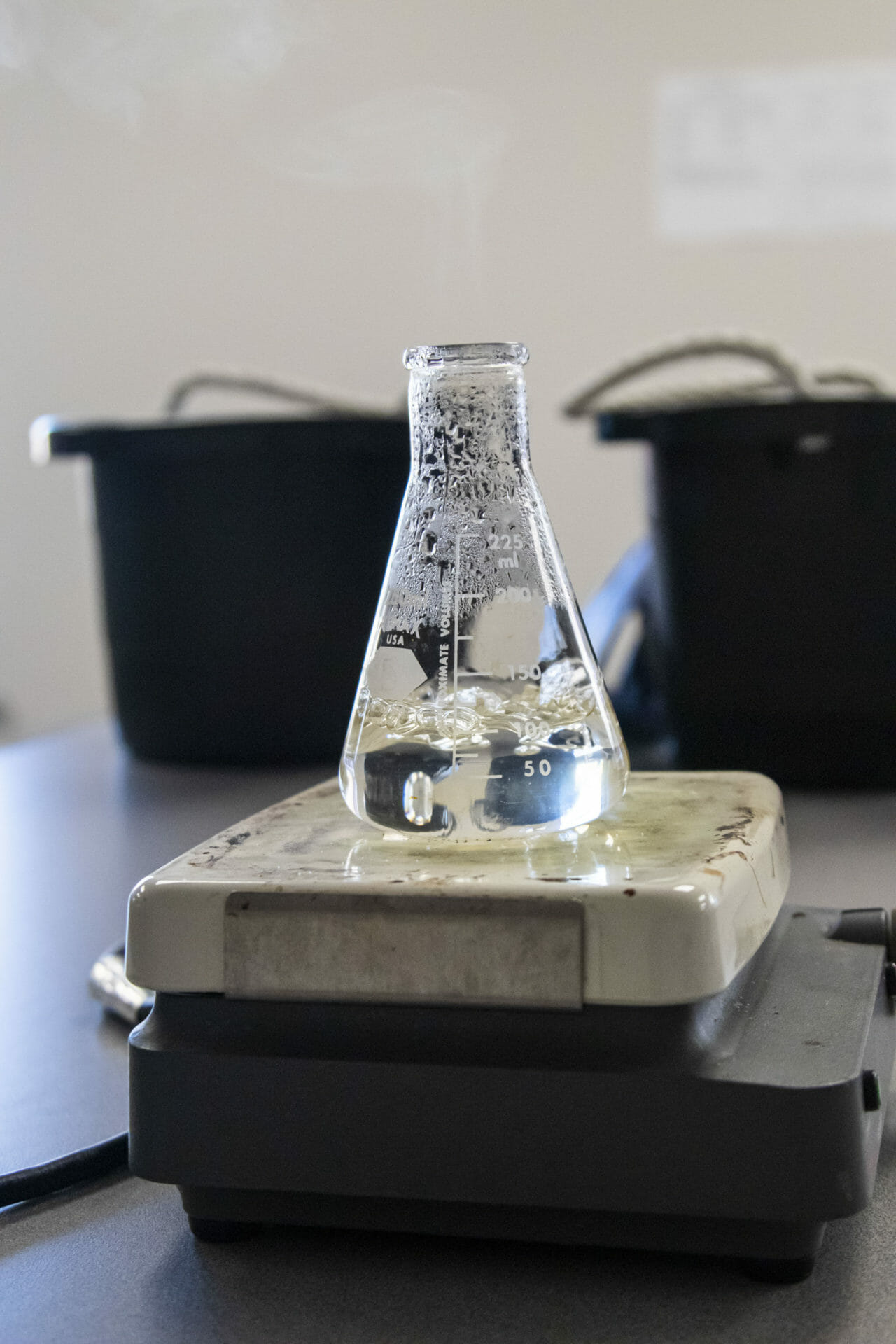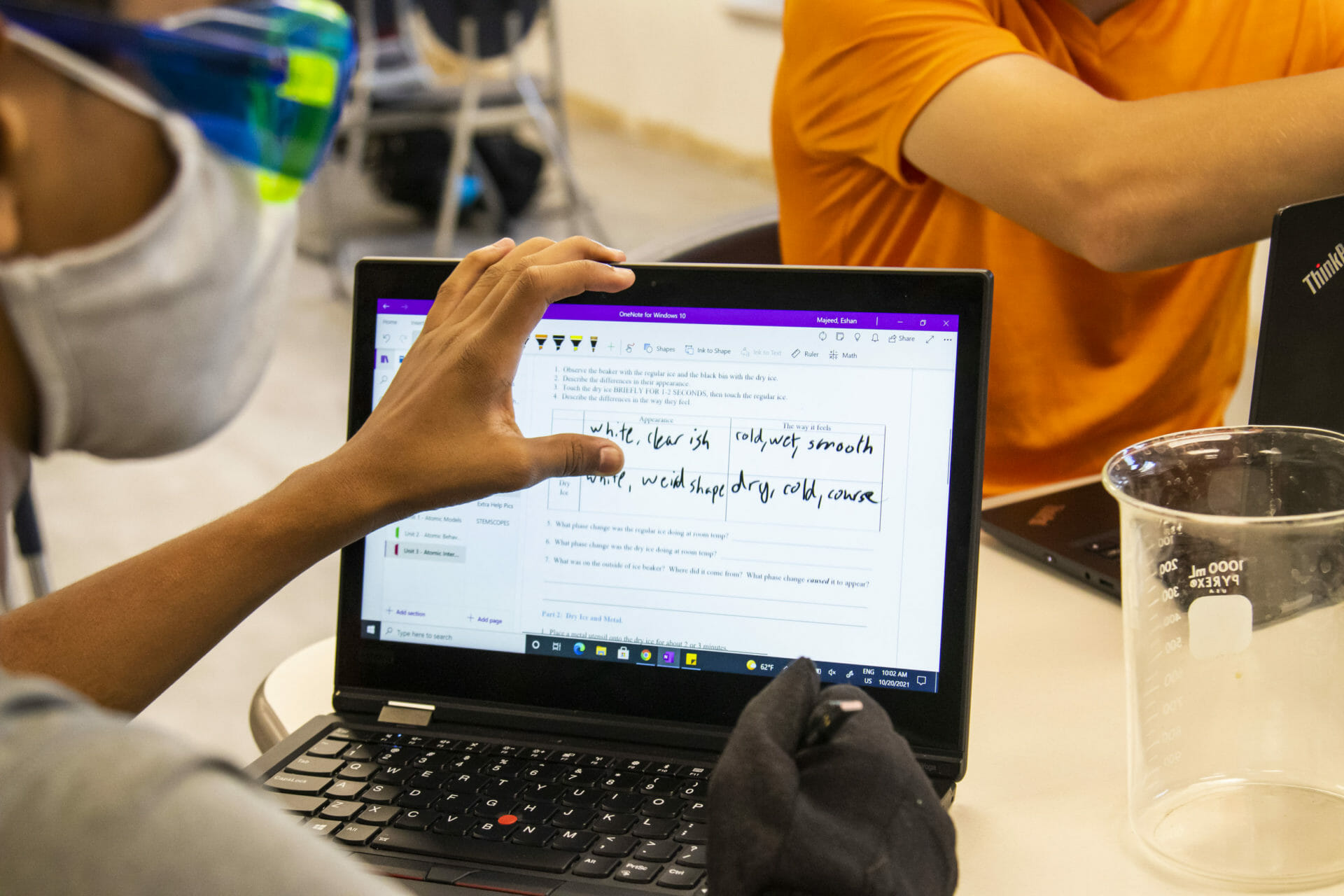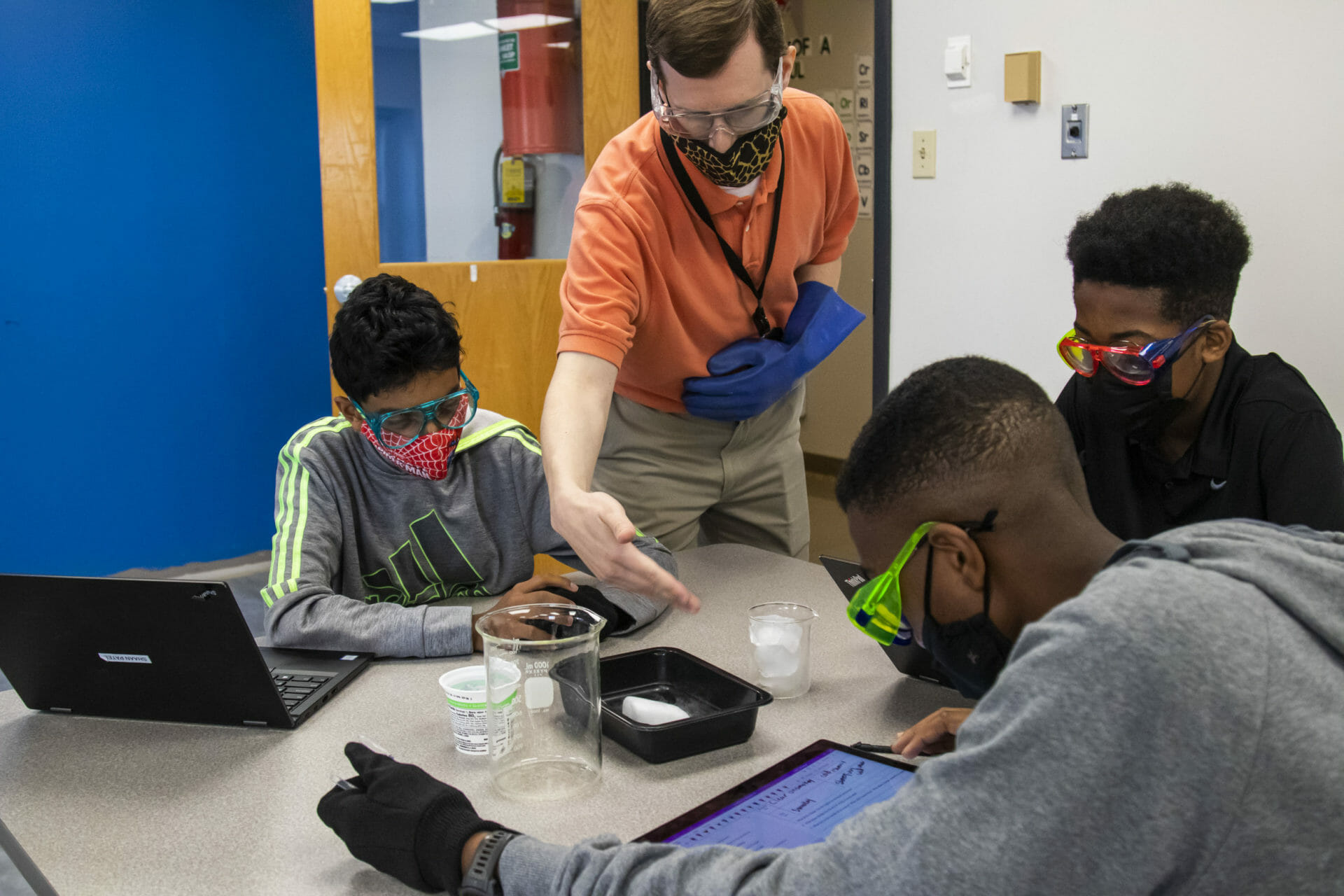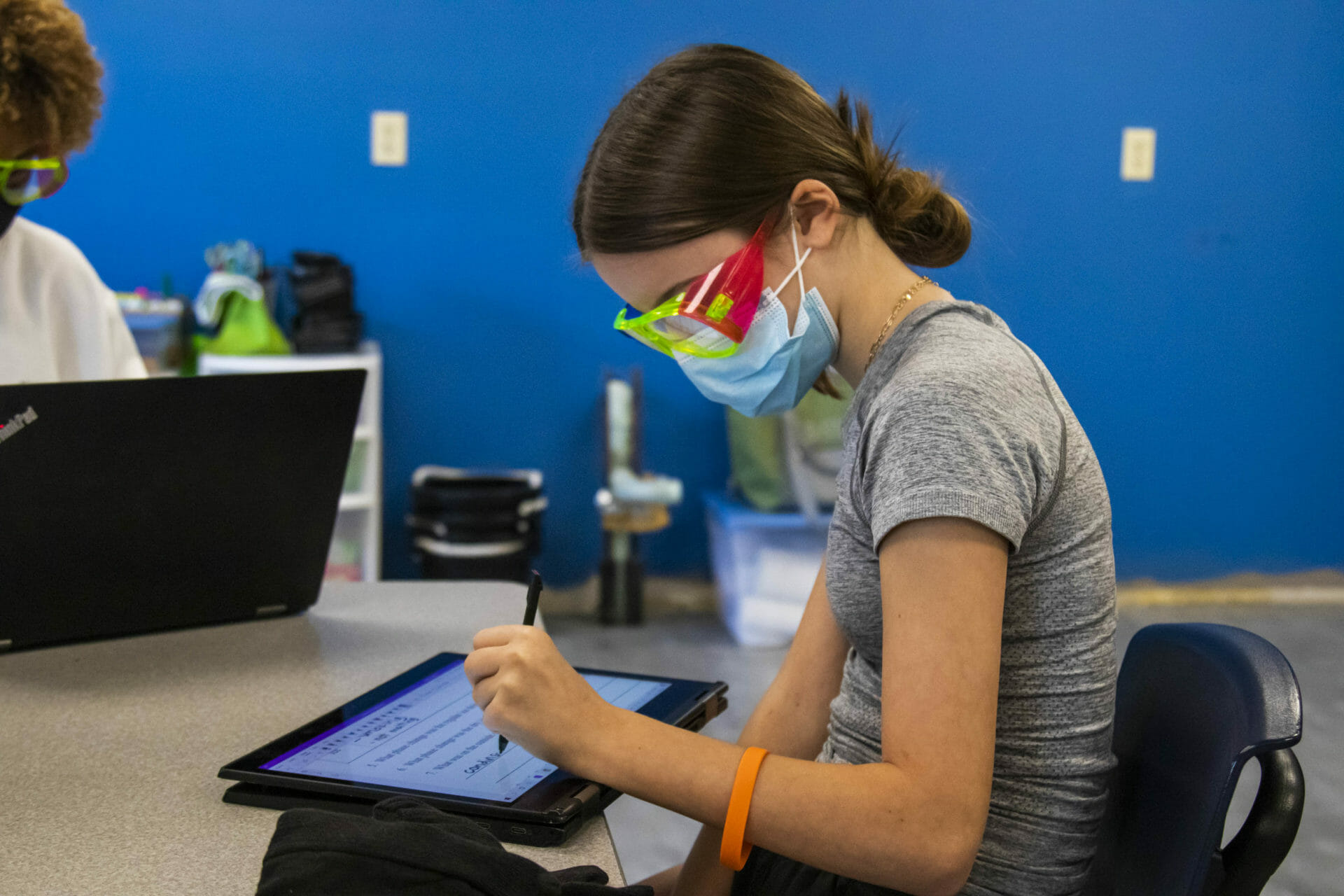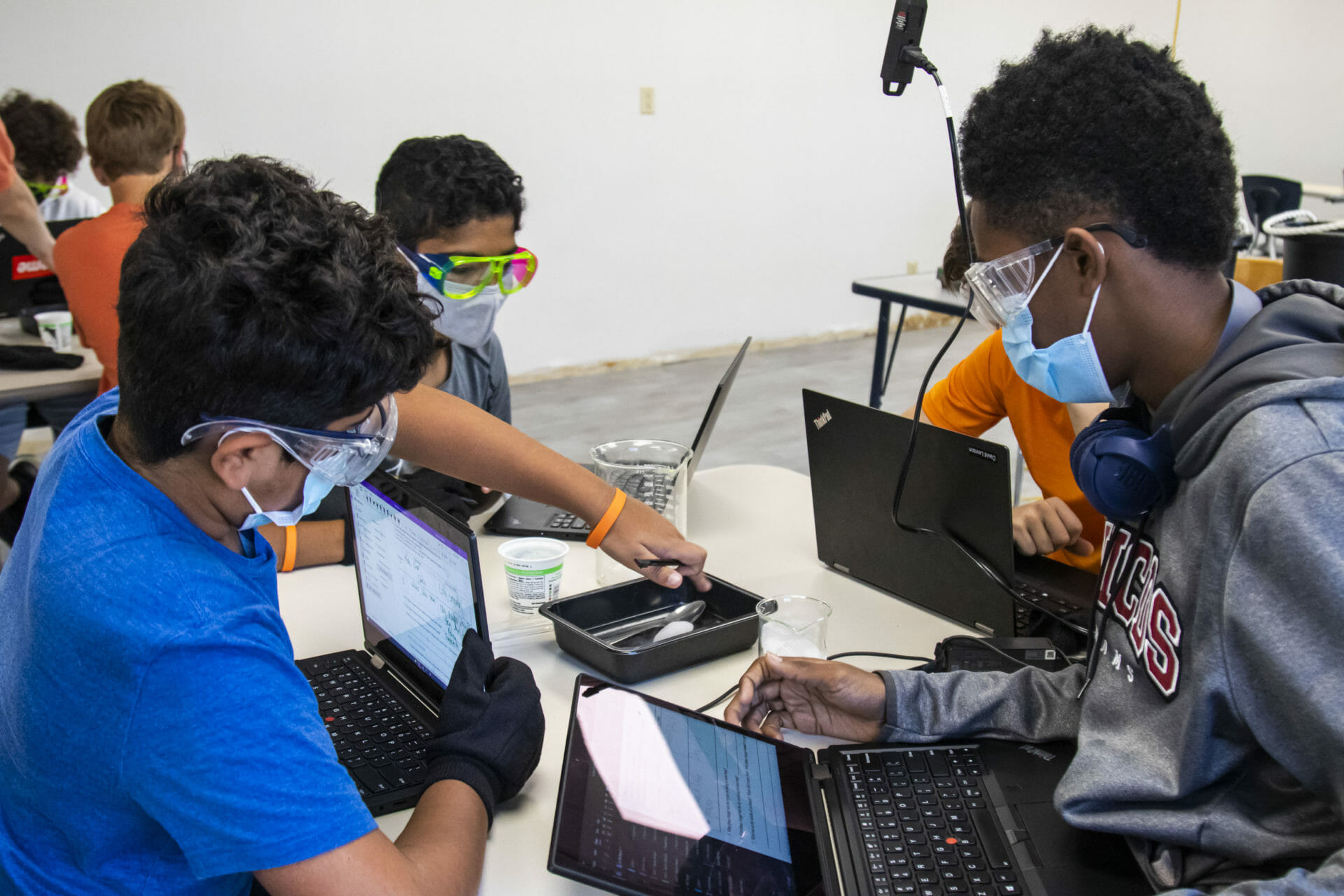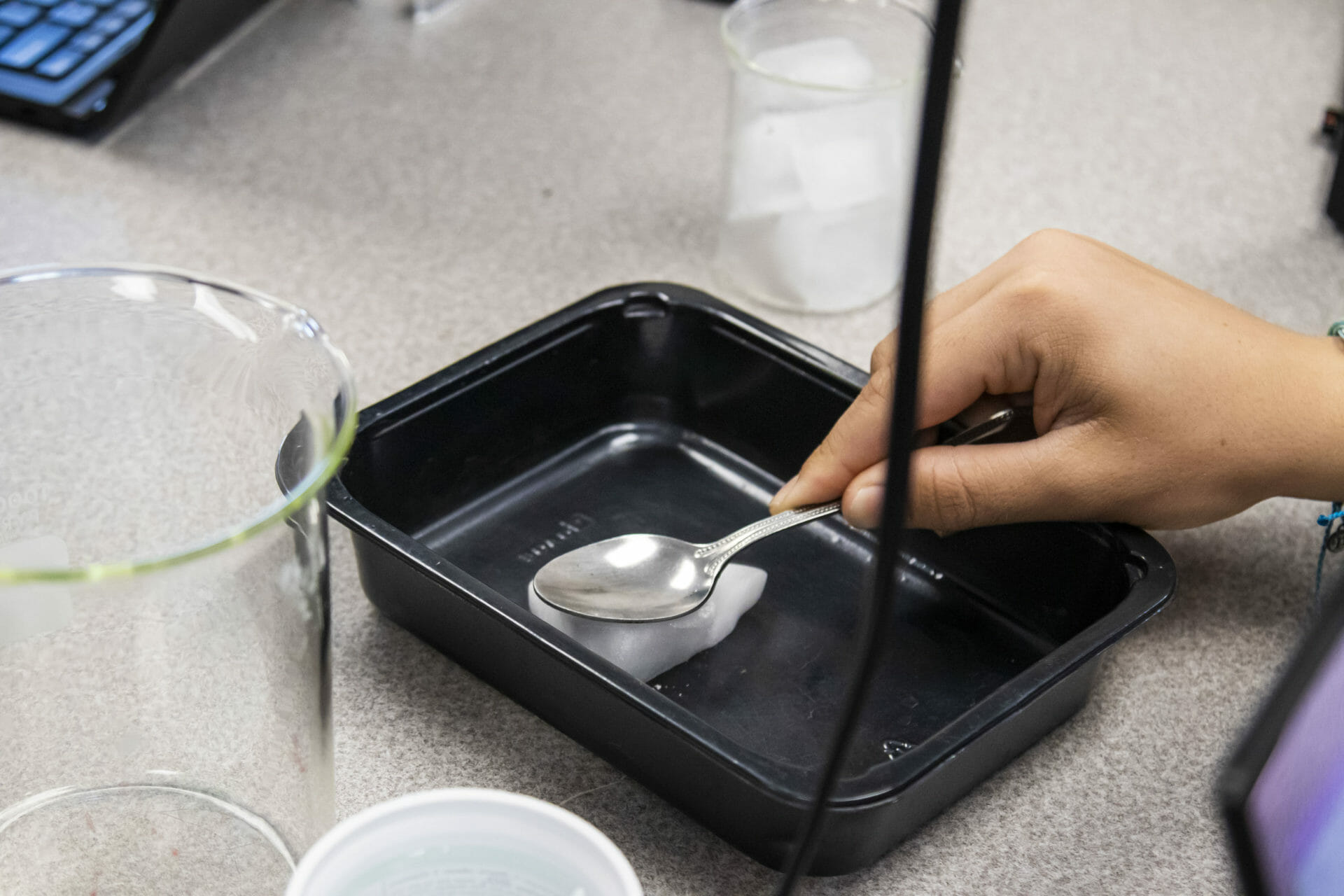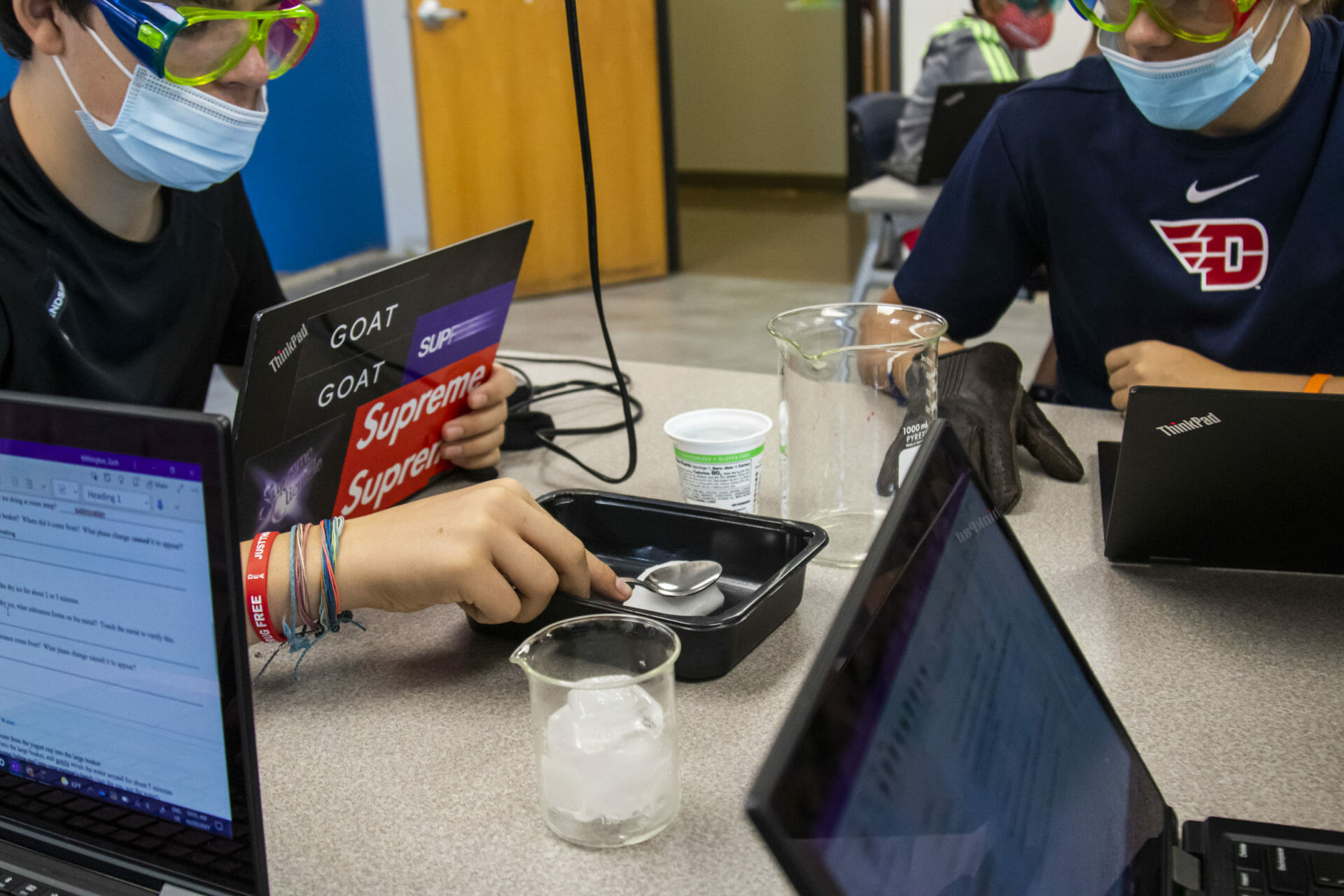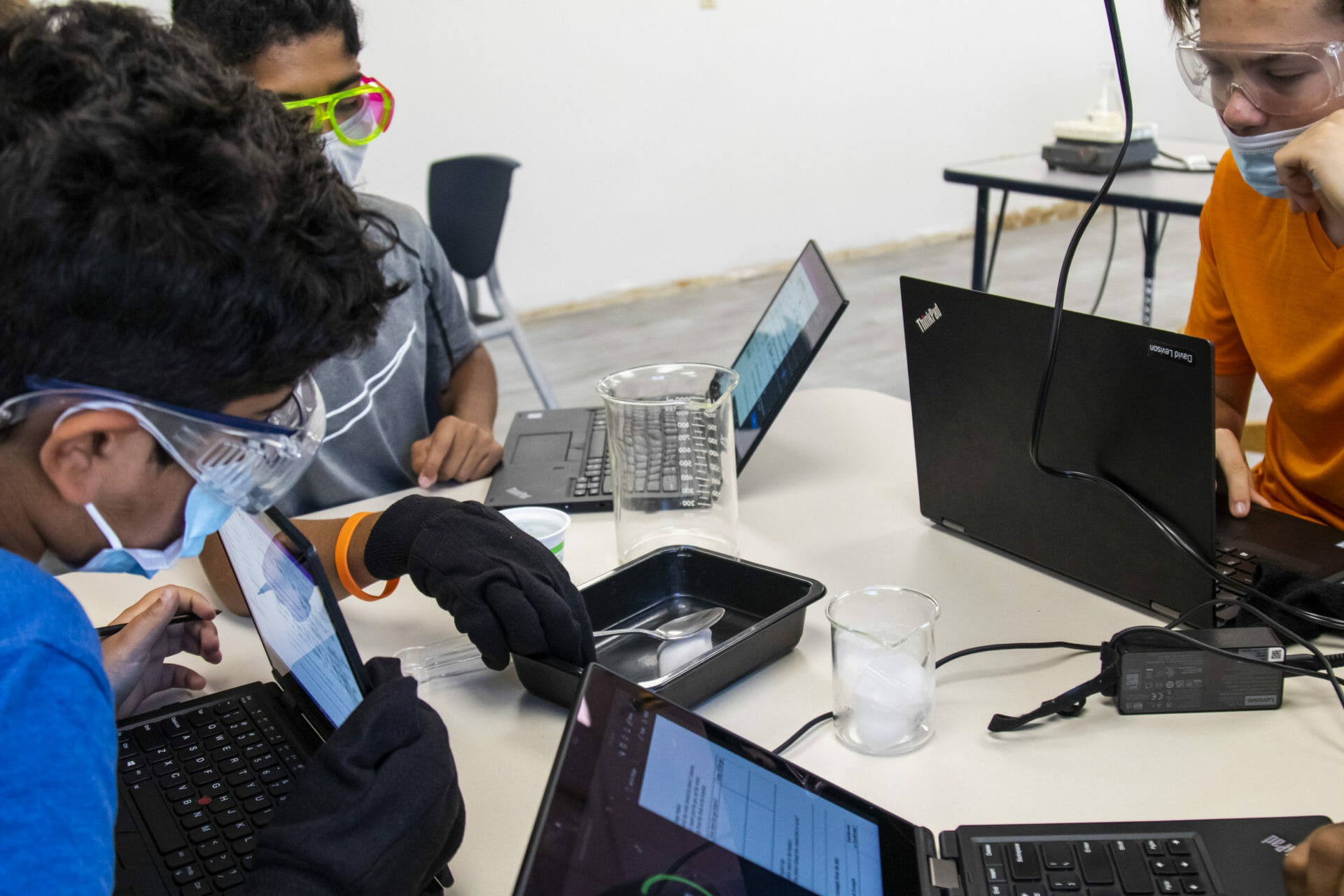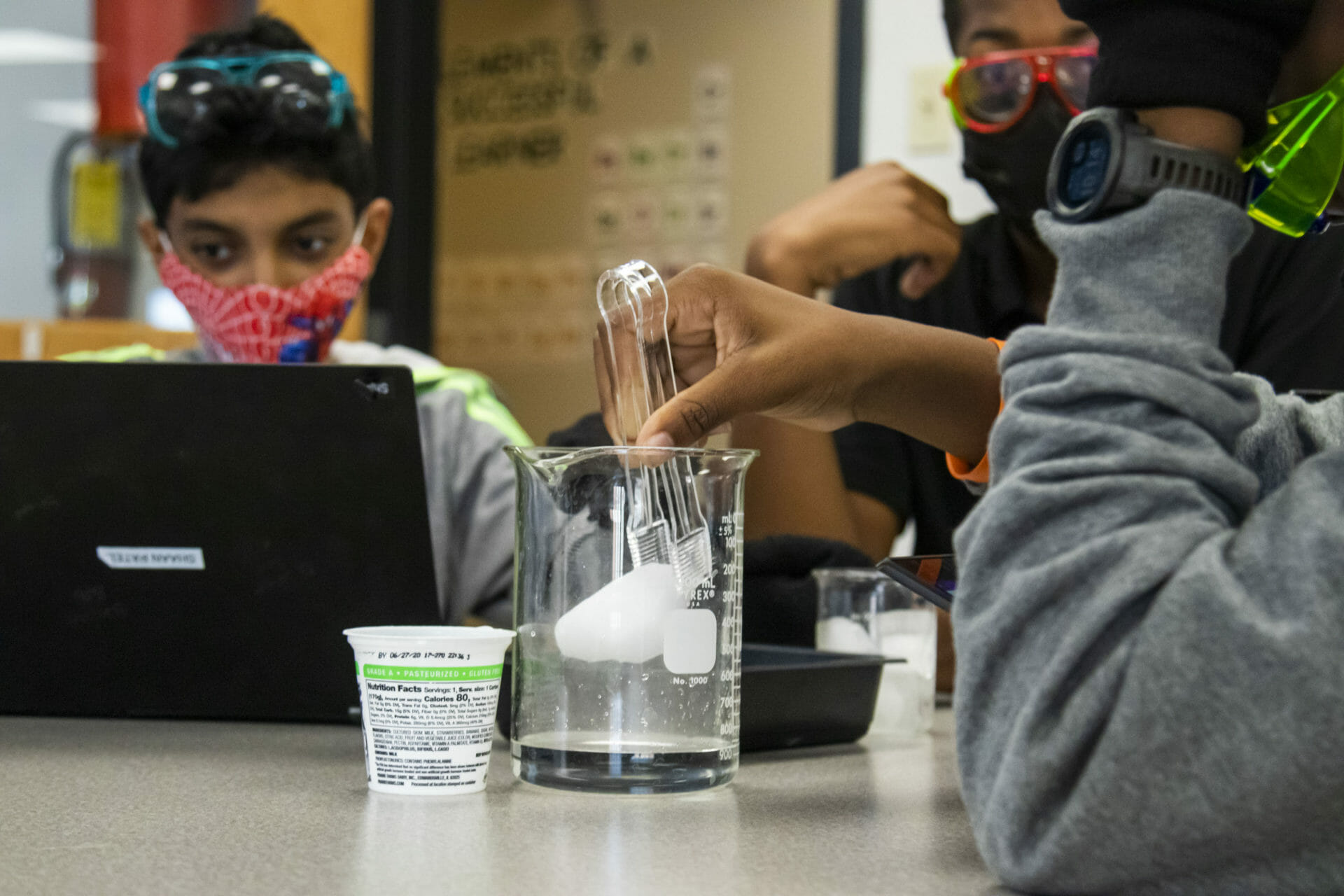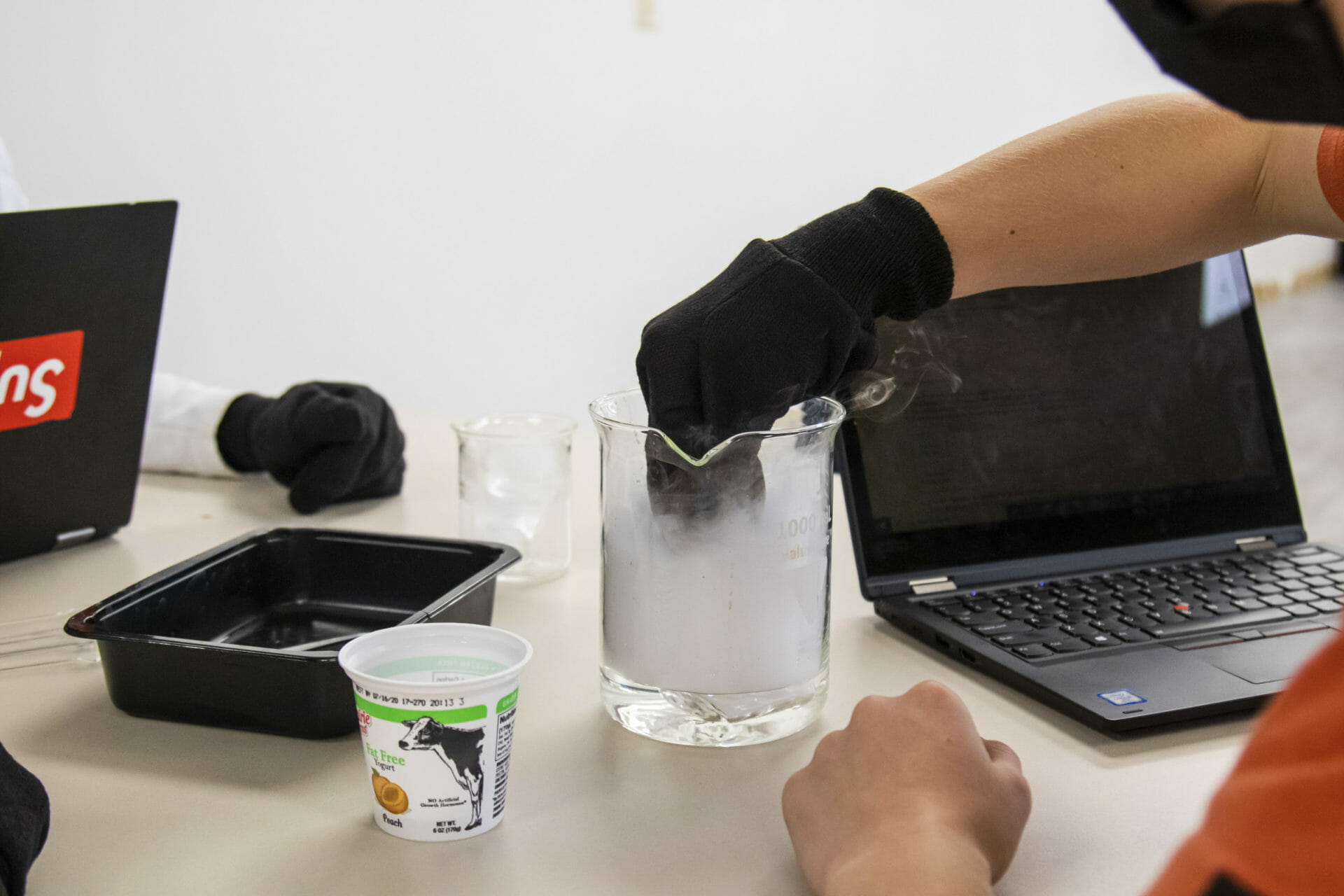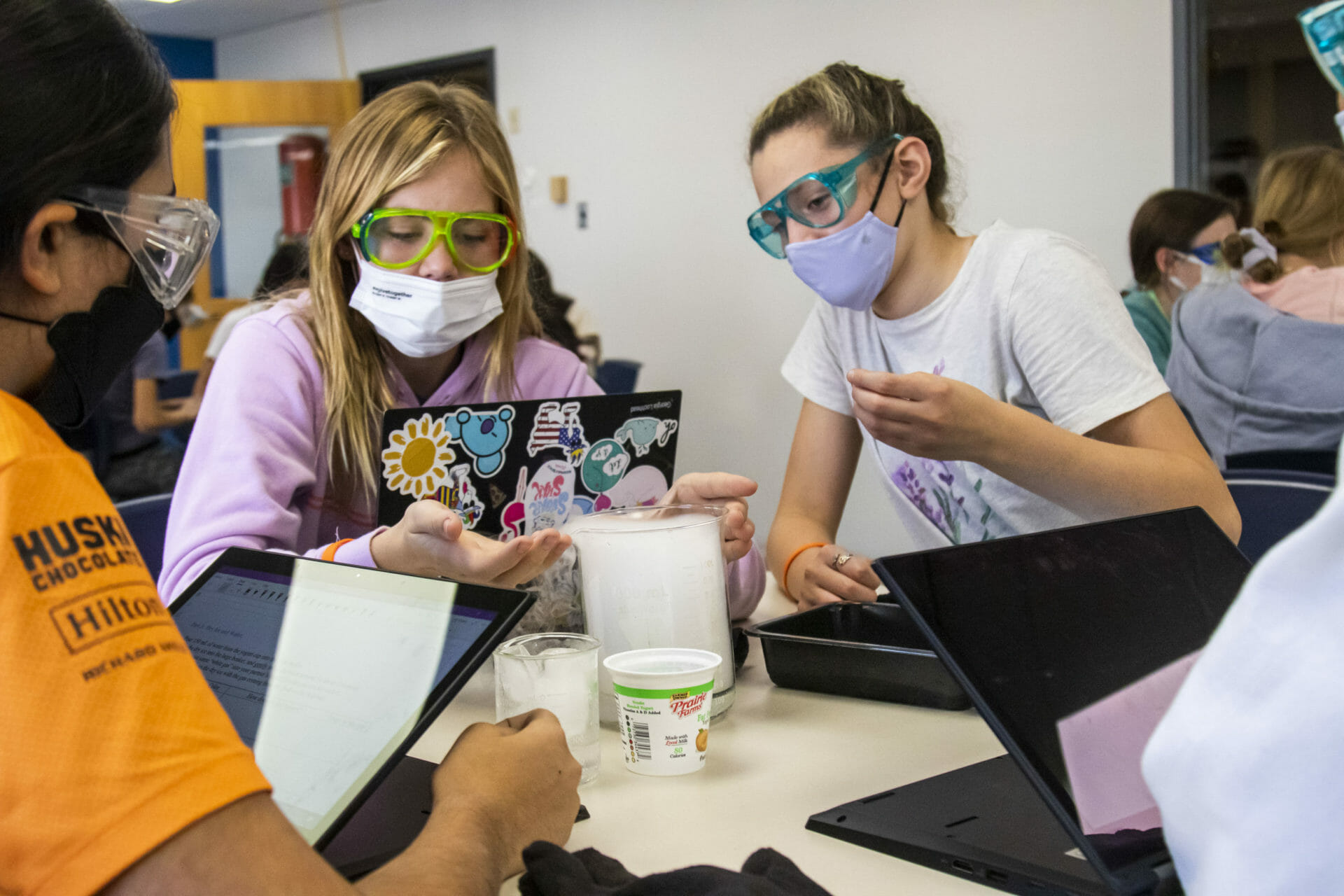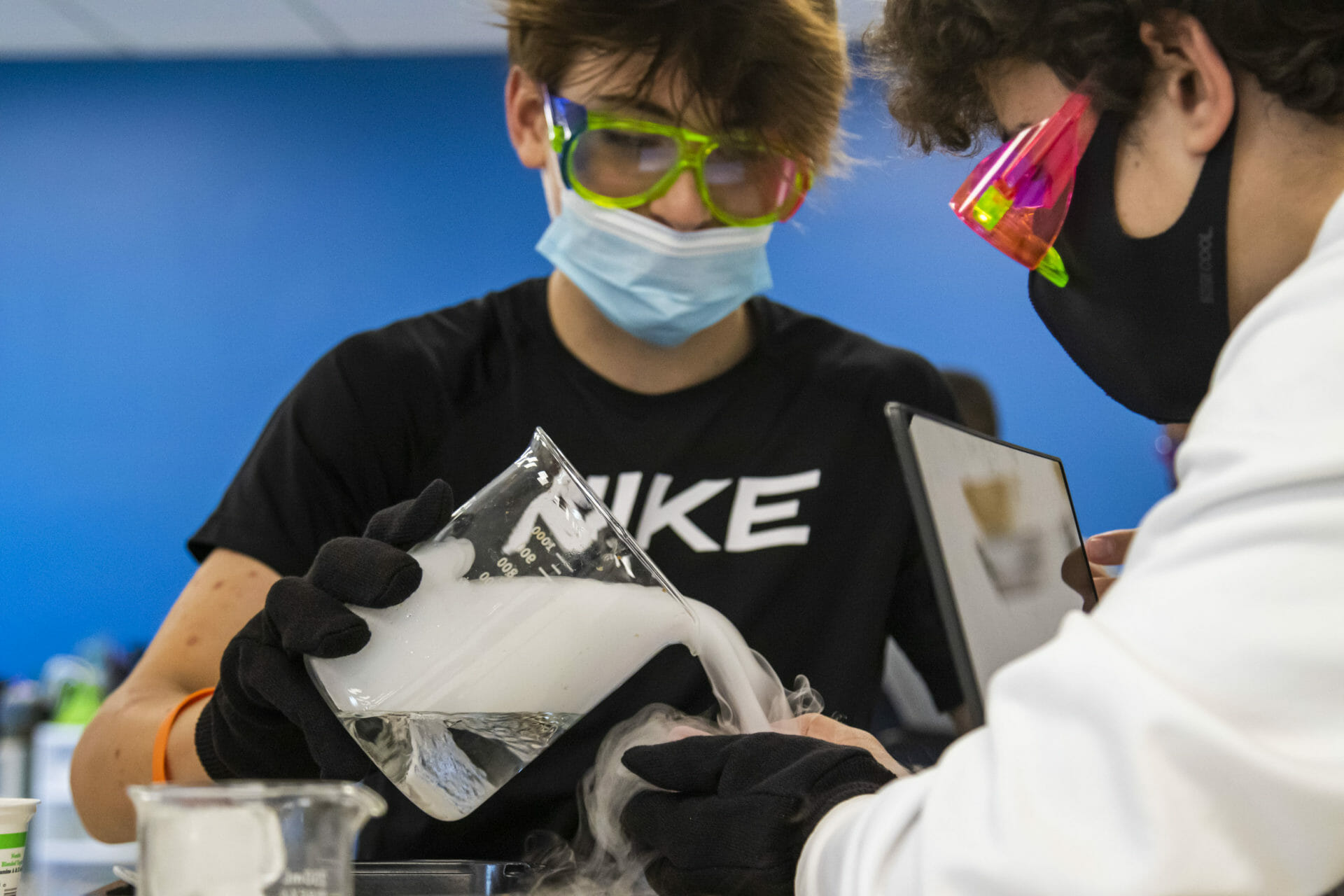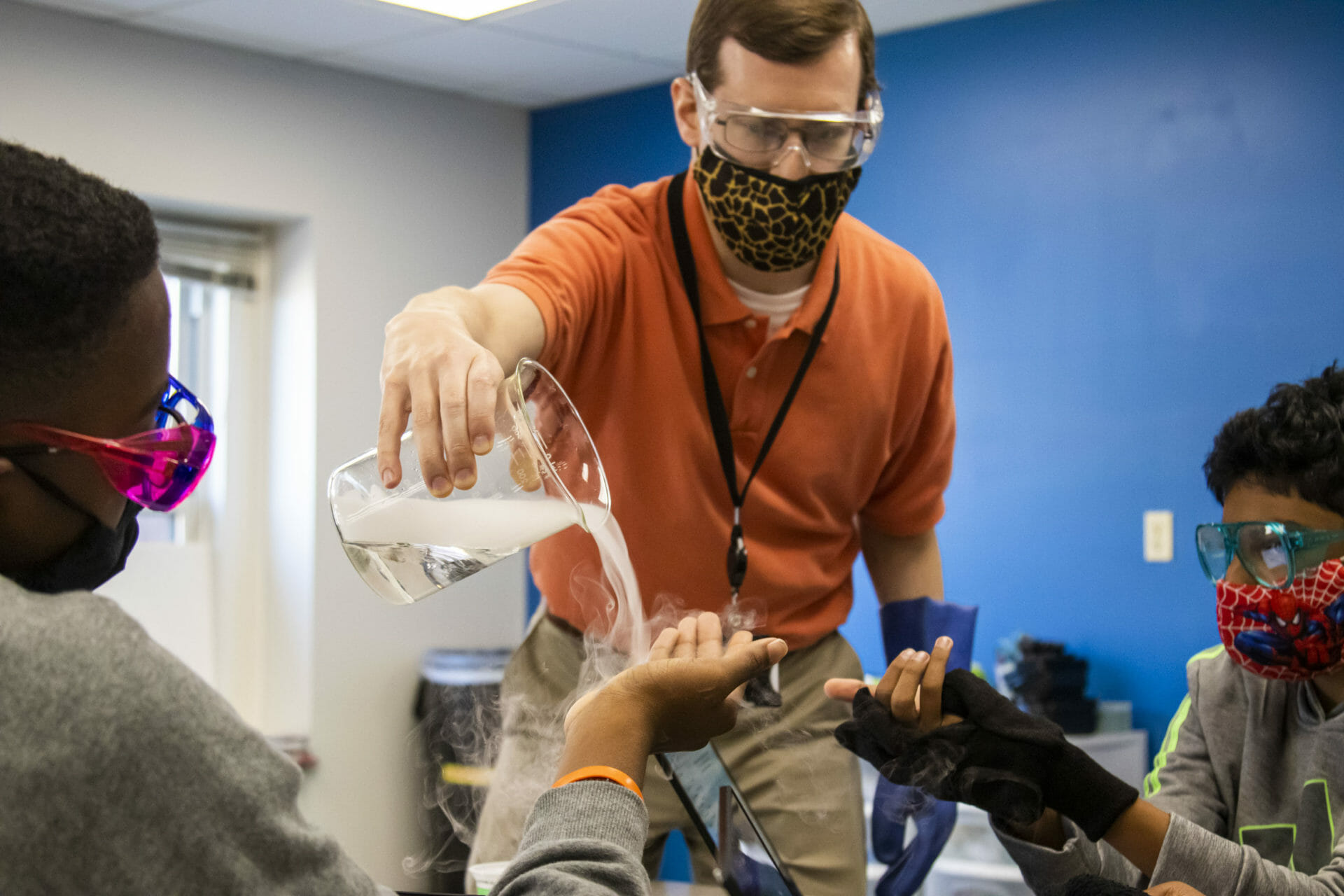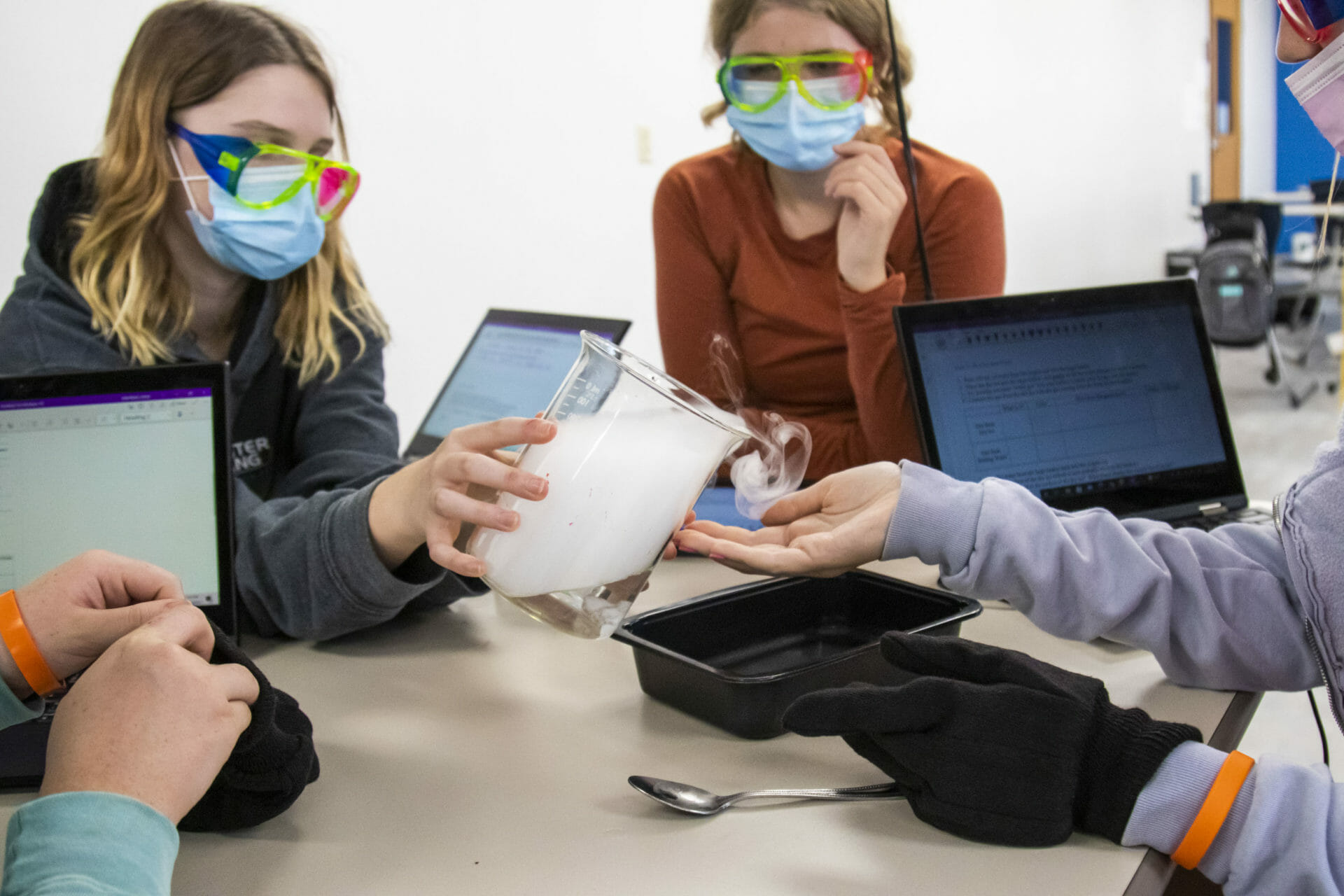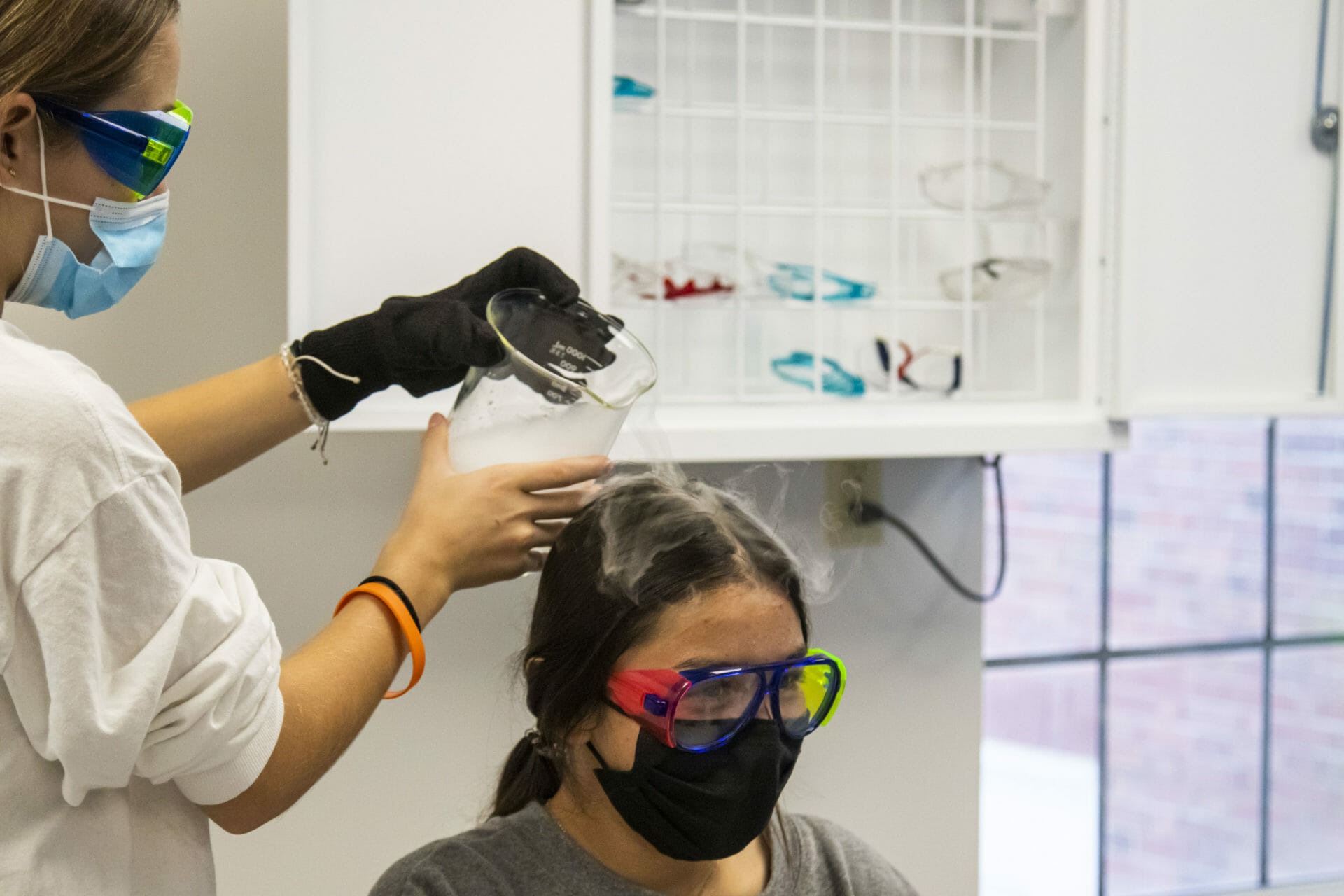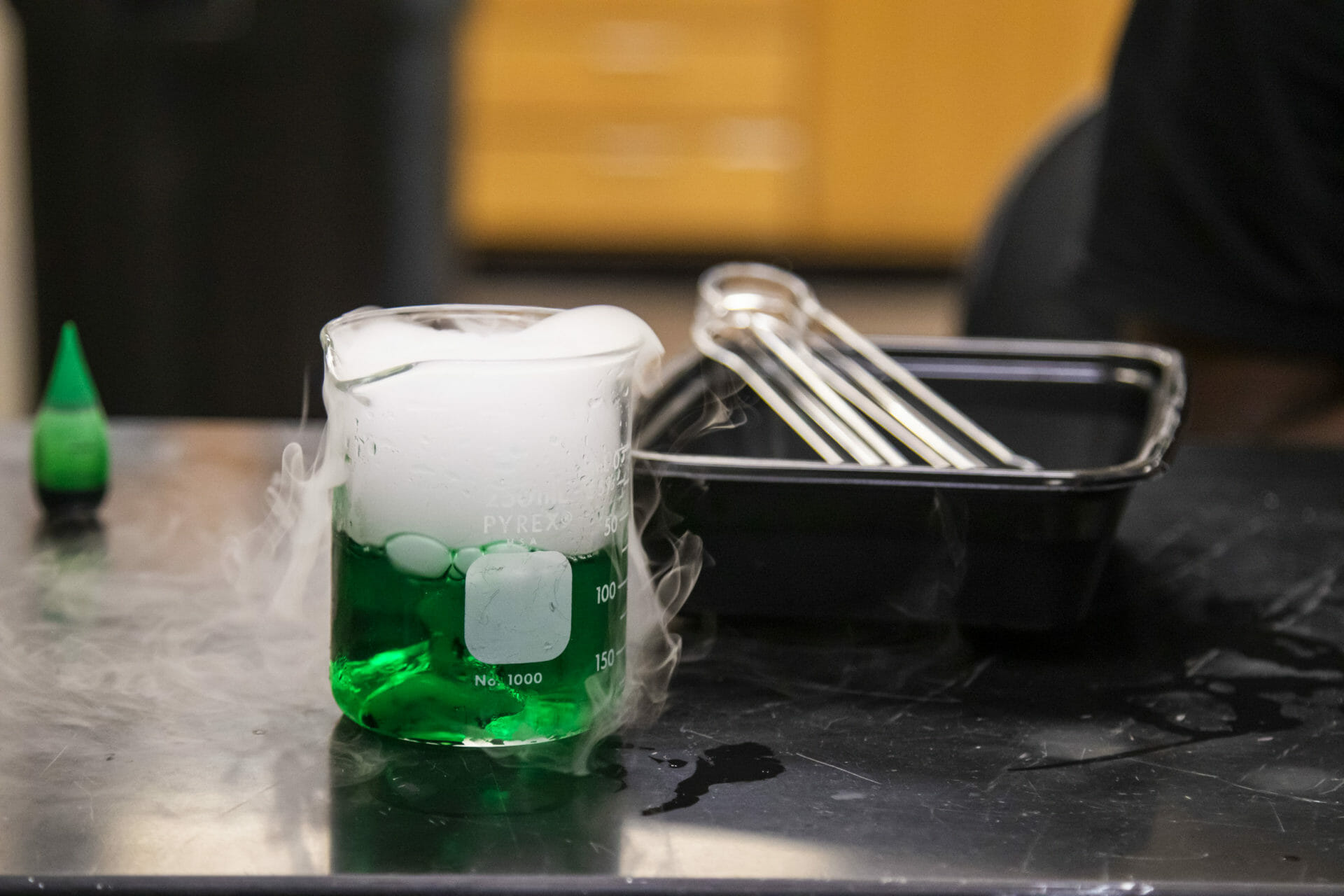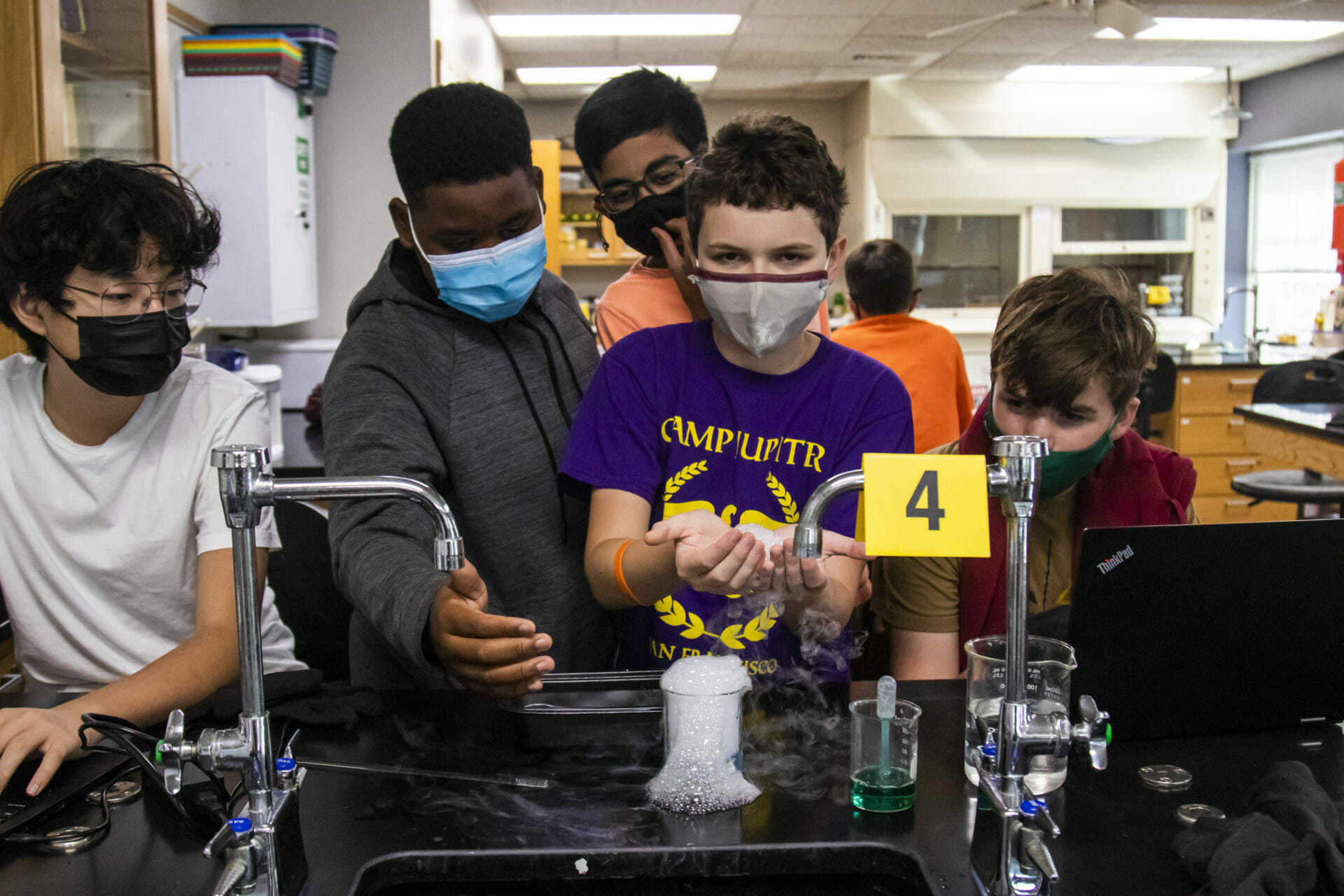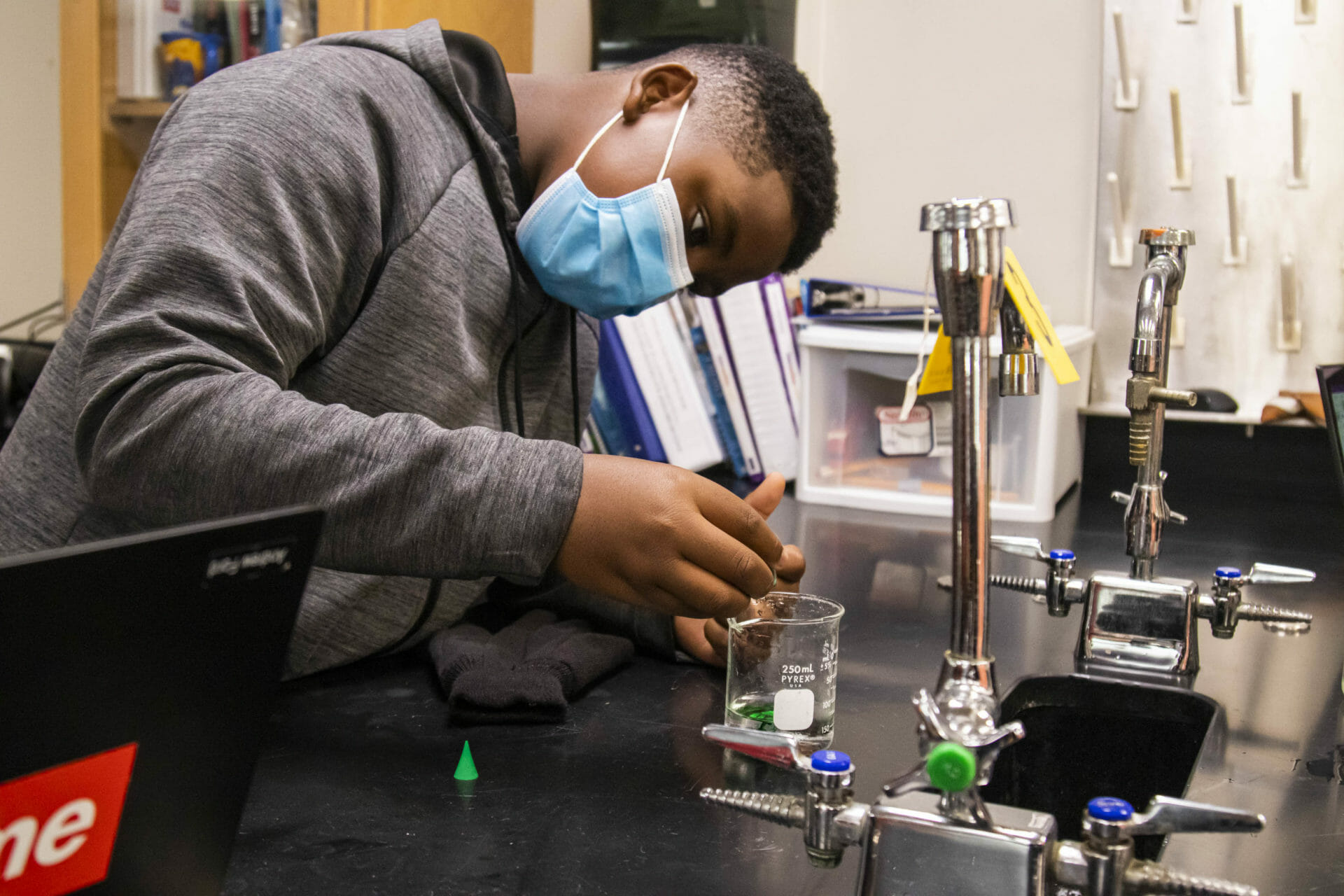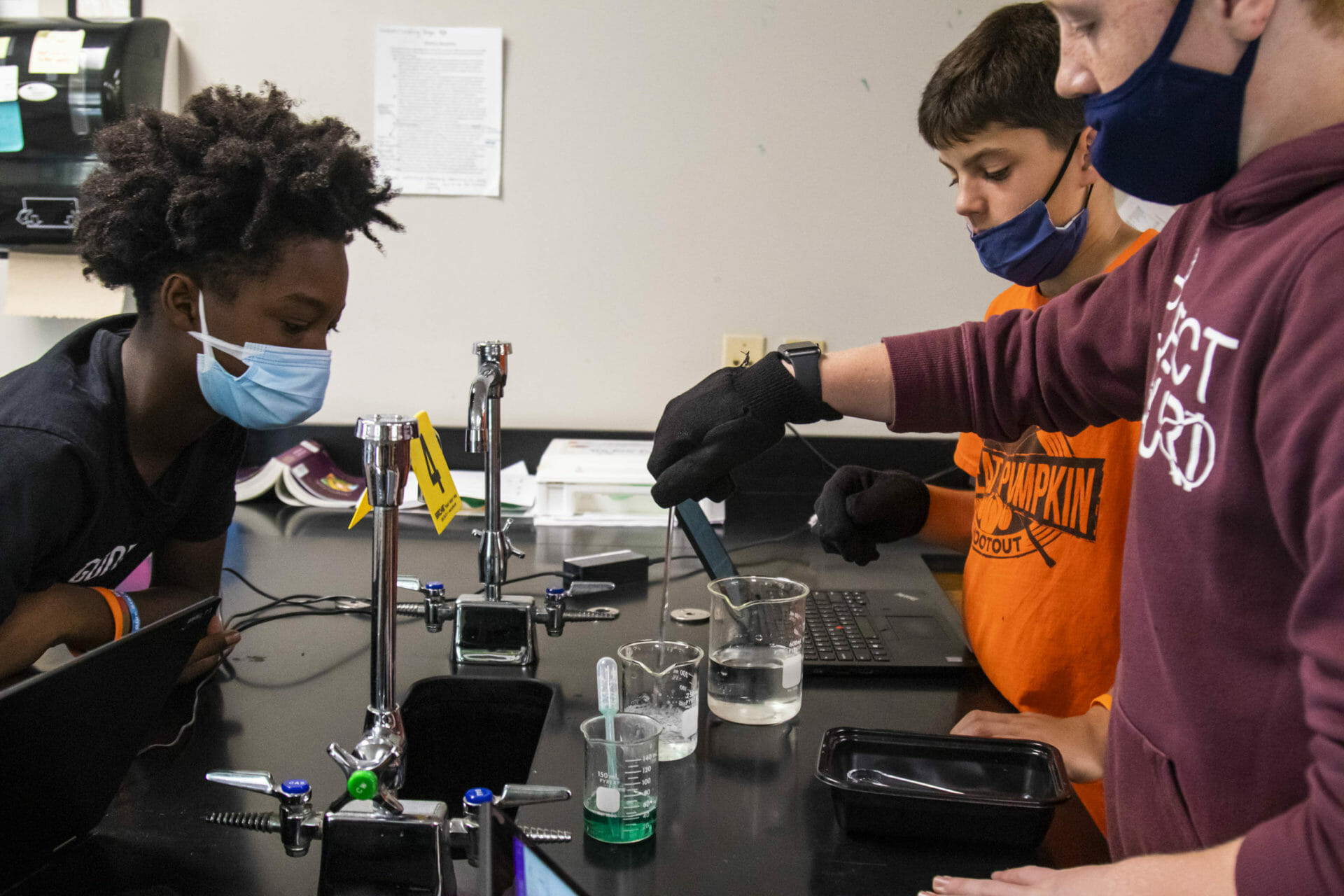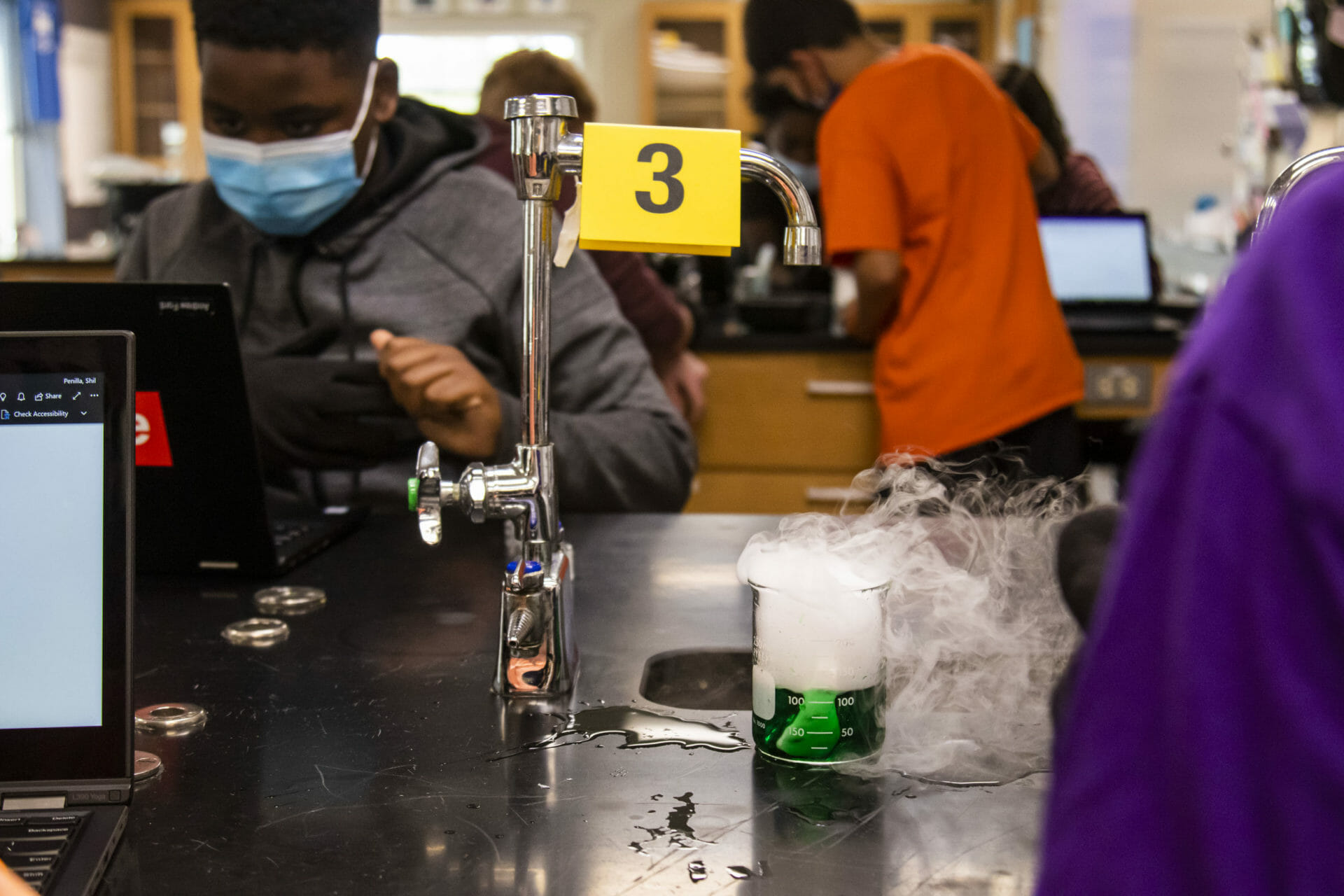Dry ice, perhaps most commonly used for adding a spooky ambiance to Halloween parties, has a wide variety of uses beyond the theatrical. It can be used for food storage, medical devices, and transportation, making it an incredibly dynamic substance.
As part of a unit on atomic interactions, MICDS 8th graders had the opportunity to observe, experiment, and document their findings while exploring dry and regular ice characteristics. The first step in learning about atomic interactions is to note the physical changes of matter, known as “phase changes,” such as solid to liquid and liquid to gas. Students noted that regular ice is plain water (a liquid) cooled to a solid state and that dry ice is carbon dioxide (a gas) cooled into solid form. Next, they subjected the ice samples to various tests to discern more clearly how they are alike and different.
How do they measure up? When the two substances were exposed to air, many students noted that dry ice felt dry and chalky compared to regular ice’s wet and smooth surface. While regular ice started to melt at room temperature, dry ice began to “steam” a little, allowing the CO2 to escape in a process called vaporization.
Middle School Science Teacher William Bander encouraged the students to place a metal spoon on the dry ice to see how the two substances react. The result? When students held a spoon on the dry ice it made a metallic buzzing sound as if it were vibrating with the microscopic release of CO2, and condensation formed on the spoon as the dry ice worked to cool it. Since dry ice is extremely cold to the touch for more than a few seconds, students donned their safety gloves to handle it for longer periods.
Then came the fun part. When students added water to the dry ice, the CO2 gas was released at a much faster rate (a process called sublimation), becoming the “witch’s brew” vapors we all know and love. To take it up a notch and add a little holiday flair, Middle School Science Teacher Callie Bambenek added green food coloring to the water, giving it a more seasonal (and very creepy) appearance. Students then took turns “pouring” the gas into each others’ hands and even onto their heads. Meanwhile, on the regular ice front, students observed the additional melting, evaporation, and temperature of the vapors when the ice was heated.
Eighth-grade students shared their reflections on the experiment as a whole:
“This was my first time working with dry ice and it was a very intriguing experience. My groupmates and I found a good balance of completing our One-Note lab review and having fun and enjoying the experiment. One thing I found surprising was when we dropped the dry ice into the water how much steam there was coming from the beaker. I was scared at first to touch the dry ice with my bare hands since Mr. Bander gave a big warning that if we held our hand on for too long we could get severe frostbite.” – Alexa Kummant ’26
“I loved the Dry Ice Lab as it was my first time experimenting with this, and the gas that was coming out was very interesting and thrilling. We were able to play with the dry ice, and we ‘poured’ the gas onto our hands and hair. I was very surprised when I learned that dry ice needs to be -78.5 degrees celsius (or -109 degrees Fahrenheit) to freeze! My table partners and I worked with dry ice by comparing it with normal ice. Even though they were both ice, they reacted very differently when we put them in water. This experiment was definitely one of my favorites, and I am looking forward to more!” – Rio Sato ’26
“I liked the hands-on approach of this lab; it was really cool how we had a bunch of different experiments to test what we know about dry ice. I thought it was the best lab that we’ve done so far in class! One crazy thing that I learned is that when you put warm metal on a substance as cold as dry ice, it makes a ringing noise and vibrates! Isn’t that wacky? I had never worked with dry ice before so finally being able to use it in a lab was super cool. My partners and I worked together trying different things to get the results that we wanted. For example, when we put the dry ice in water and swished it around for a few minutes, we all took turns moving it around! It was a fun lab and adventure and I hope to do more like this in the future!” – Katherine Ellenhorn ’26
“In the Dry Ice experiment, I enjoyed testing the dry ice to see how it reacts to different substances. The most impressive part was how Mr. Bander made a serious topic fun.” – Gabriel Sedighi ’26
“I enjoyed being able to work together with my table to safely experiment with dry ice because it’s not something you see every day. I had no idea what would happen when it was placed in water. It makes a sort of liquefied smoke. We split up and solved different parts of the experiment and then shared our results with each other. I had never worked with dry ice before and this made it fun.” – Nevin Hill ’26
We’re delighted that our students finally “broke the ice” by manipulating these icy substances to understand the early stages of atomic interactions.
